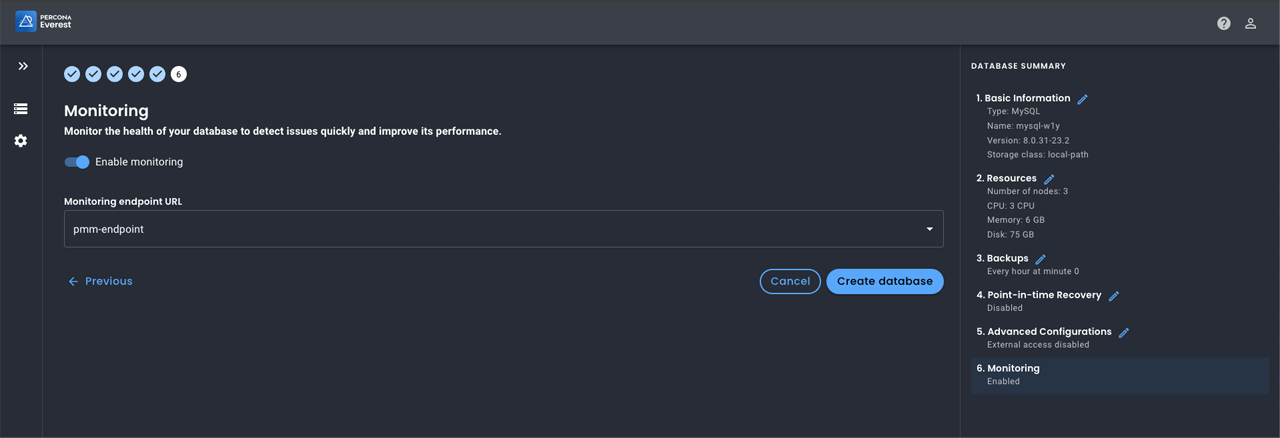What’s new in Percona Everest 0.7.0¶
To begin your journey with Percona Everest, check out the Quickstart Guide for Percona Everest.
Percona Everest is an open source private database-as-a-service that helps developers deploy code faster, scale deployments rapidly, and reduce database administration overhead. Plus, you can regain control over your data, database configuration, and DBaaS costs.
Version 0.7.0 introduces the following changes:
Point-in-Time Recovery (PITR) for MongoDB databases¶
We’re expanding Percona Everest’s PITR capabilities to include MongoDB databases.
You can now also restore MongoDB databases to specific points in time within the same cluster. This gives you more control over your MongoDB environments and more options for data recovery.
Future releases will cover PITR support for PostgreSQL databases and PITR restores to different clusters.

Post-Restore step for MongoDB¶
PITR restores alter the timeline of MongoDB oplog events. As a result, MongoDB oplog slices created after the restore timestamp and before the last backup become invalid.
To seamlessly resume PITR after a restore, make sure to run a new full backup. This new backup will serve as the starting point for oplog updates, ensuring the continuity and integrity of your data.
Monitoring¶
Percona Everest now comes with monitoring capabilities that will help ensure your database infrastructure is always reliable and secure.
Here’s what you’ll get out of Percona Everest monitoring:
- Database availability and uptime tracking
- Insights into your database performance
- Proactive issue detection and addressing opportunities
- Continuous monitoring

If you’re looking for in-depth insights into this feature, refer to our comprehensive documentation.
Get expert help¶
If you need assistance, visit the community forum for comprehensive and free database knowledge, or contact our Percona Database Experts for professional support and services.